 |
 |
 |
| |
Risk of hepatitis C infection following bacterial sexually transmissible infections among gay and bisexual men in Australia 2016-2020
|
| |
| |
STIs Tied to Higher Risk of New HCV Infection in Gay and Bisexual Men
IAS 2023, July 23-26, 2023. Brisbane
Mark Mascolini
Syphilis doubled the risk of new HCV infection in Australian gay and bisexual men who have sex with men (MSM) with HIV, according to an analysis of 6500 men [1]. Among more than 13,000 MSM using preexposure prophylaxis (PrEP) to prevent HIV, rectal chlamydia or rectal gonorrhea boosted HCV risk more than 2.5-fold.
Researchers from Melbourne’s Burnet Institute noted historically high prevalence and incidence of HCV in MSM with HIV, although reports of declining incidence have emerged from Australia, England, the Netherlands, and Switzerland. HCV incidence in MSM who use PrEP appeared to fall in some countries after the arrival of direct-acting antivirals against HCV.
Recent work shows that HCV incidence dropped 78% among Australian MSM with HIV from 2015 to 2019 [2]. HCV incidence fell 80% in the same period among Australian MSM who use PrEP. Authorities believe Australia is on track to eliminate HCV in MSM before the global target of 2030. Brendan Harney and Burnet colleagues conducted this new analysis to determine whether bacterial sexually transmitted infections (STIs) are “a marker of hepatitis C risk among gay and bisexual men in an era of treatment as prevention.”
The Australian Collaboration for Coordinated Enhanced Sentinel Surveillance of Sexually Transmissible Infections and Blood Borne Viruses tracks (among many trends) the impact of rectal chlamydia, rectal gonorrhea, and syphilis on subsequent HCV infection by analyzing time-updated positive STI diagnoses in the 2 years before an HCV test.
Of the 6529 MSM with HIV eligible for the study, 92 (1.4%) picked up HCV infection. Statistical analysis adjusted for age and cumulative number of each STI test determined that syphilis doubled the risk of new HCV (adjusted hazard ratio [aHR] 1.99, 95% confidence interval [CI] 1.11 to 3.58, P = 0.02). In the same analysis, rectal chlamydia and rectal gonorrhea had no impact on HCV risk in MSM with HIV.
Among 13,061 MSM using PrEP to prevent HIV, 48 (0.37%) got HCV infection. Analysis adjusted for age and cumulative number of each STI test figured that rectal chlamydia boosted risk of new HCV infection 2.75-fold (aHR 2.75, 95% CI 1.42 to 5.32, P = 0.003), while rectal gonorrhea upped the risk 2.5-fold (aHR 2.54, 95% CI 1.28 to 5.05, P = 0.008).
The Burnet team concluded that different bacterial STIs affect risk of incident HCV in MSM with HIV and MSM using PrEP. Whether these associations reflect behavioral or biological differences between these two groups of men—or perhaps both factors—remains to be determined. The researchers suggested that an STI diagnosis in MSM should prompt HCV testing and perhaps more frequent HCV testing afterwards.
References
1. Harney B, Sacks-Davis R, P. Agius P, et al Risk of hepatitis C infection following bacterial sexually infections among gay and bisexual men in Australia 2016-2020. IAS 2023, July 23-26, 2023. Brisbane.
2. Harney BL, Sacks-Davis R, van Santen DK, et al. The incidence of hepatitis C among gay, bisexual, and other men who have sex with men in Australia, 2009-2019. Clin Infect Dis. 2022;74:1804-1811. doi: 10.1093/Cid/ciab720.
https://pubmed.ncbi.nlm.nih.gov/34698338/
-----------------------------
Risk of hepatitis C infection following bacterial sexually transmissible infections among gay and bisexual men in Australia 2016-2020
IAS 2023 july 24
( B. HARNEY )
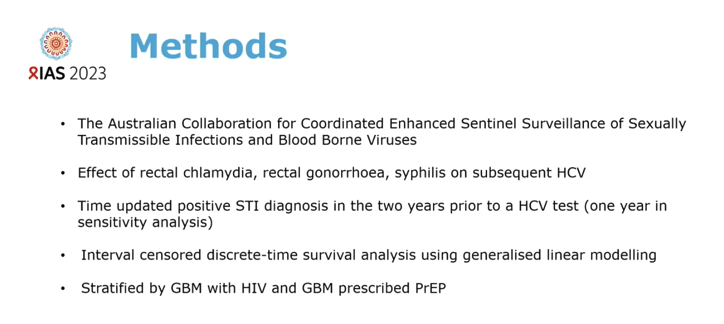
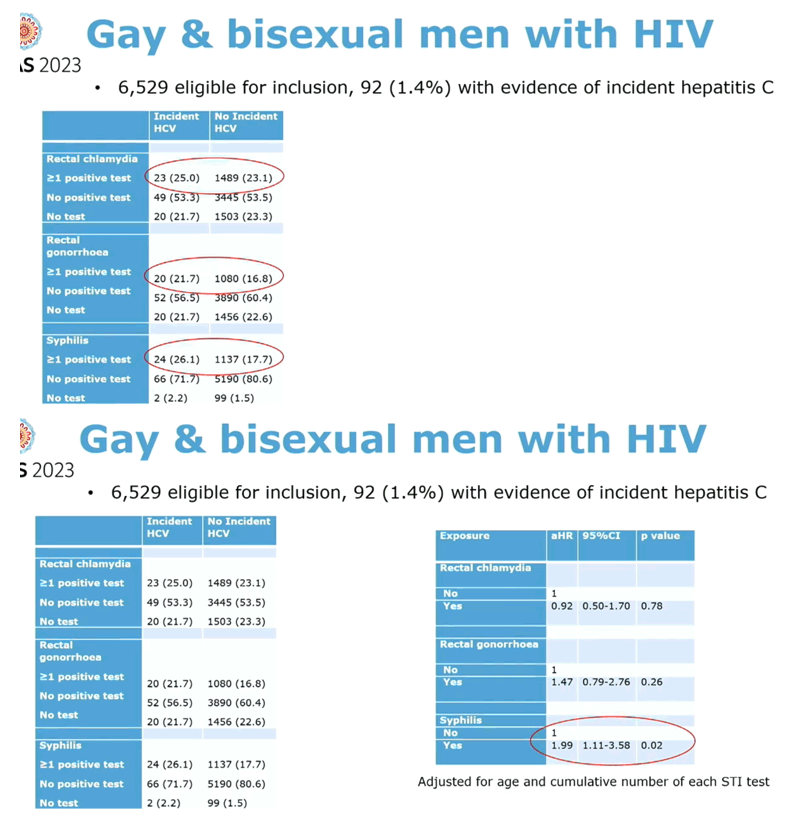
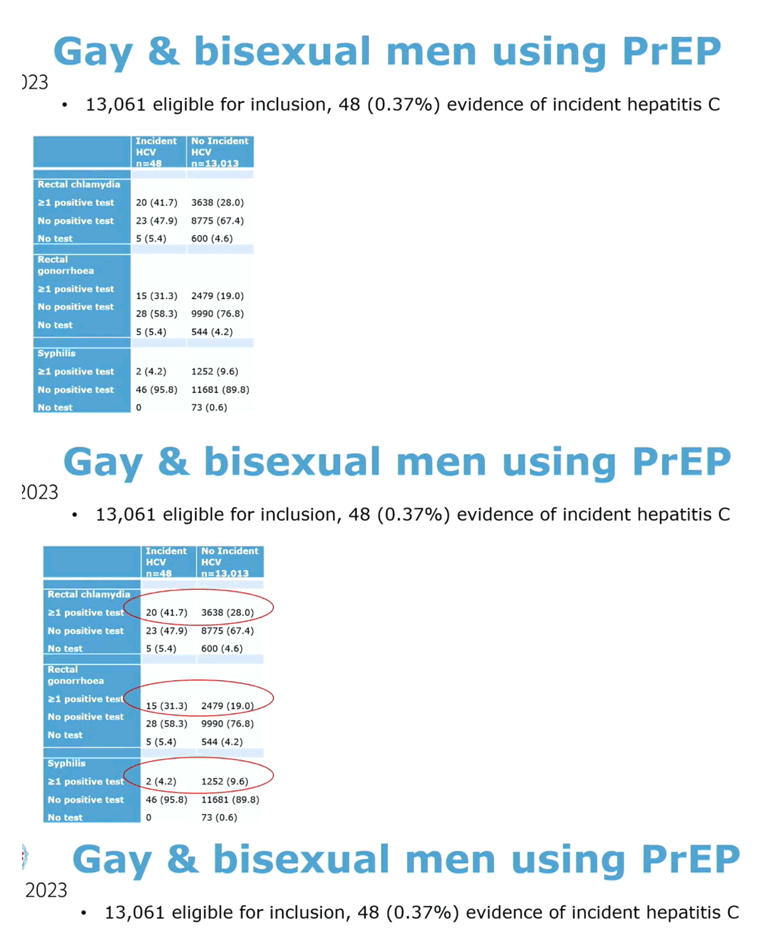
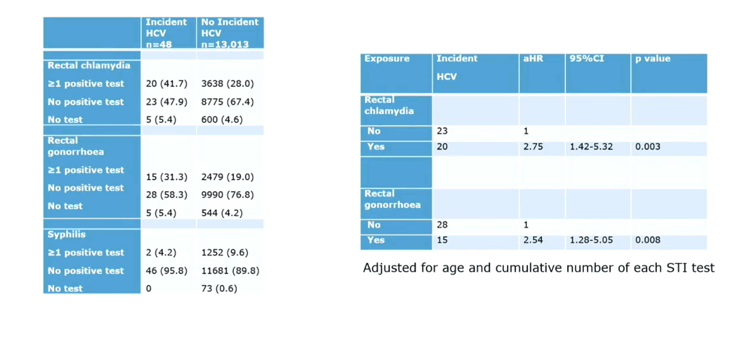
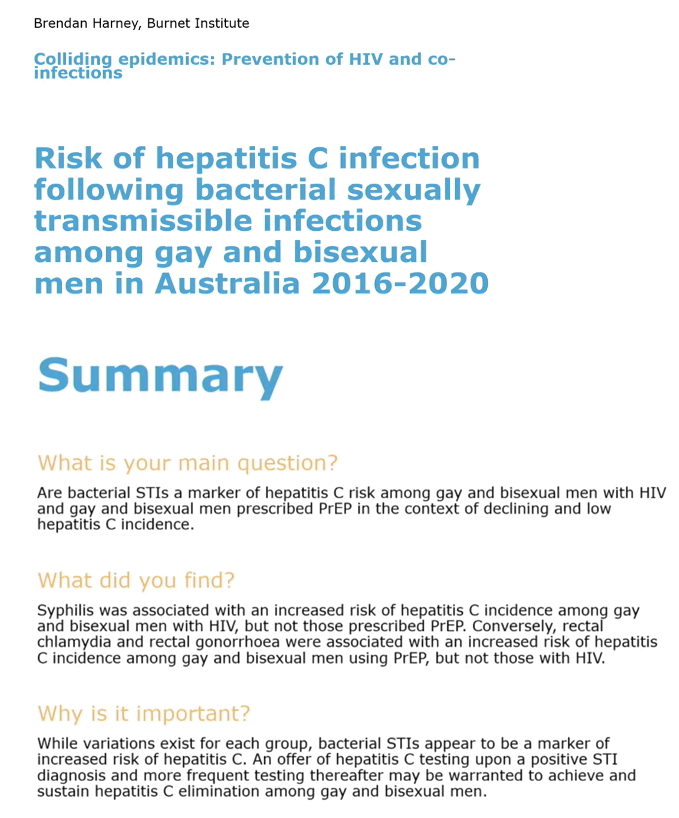
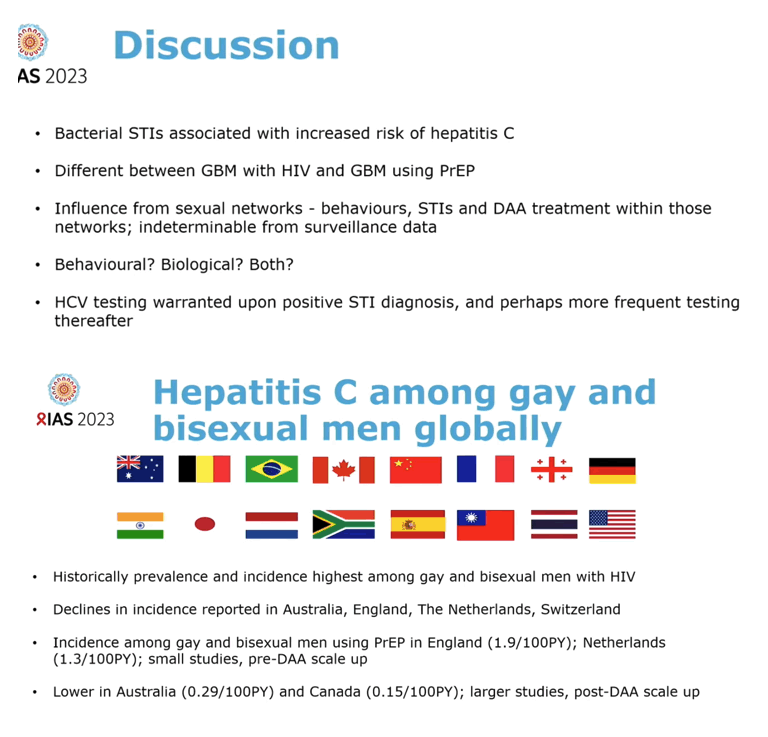
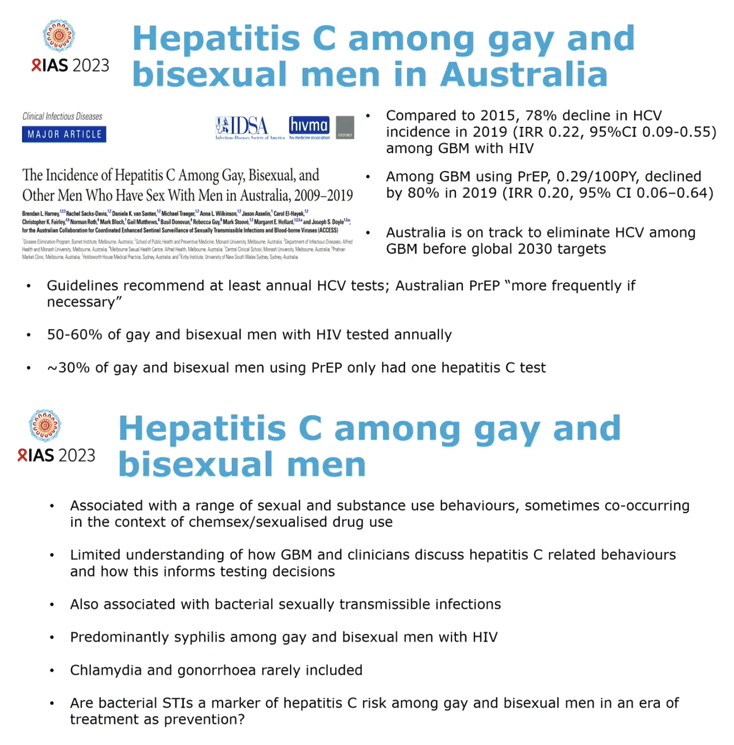
|
| |
|
 |
 |
|
|